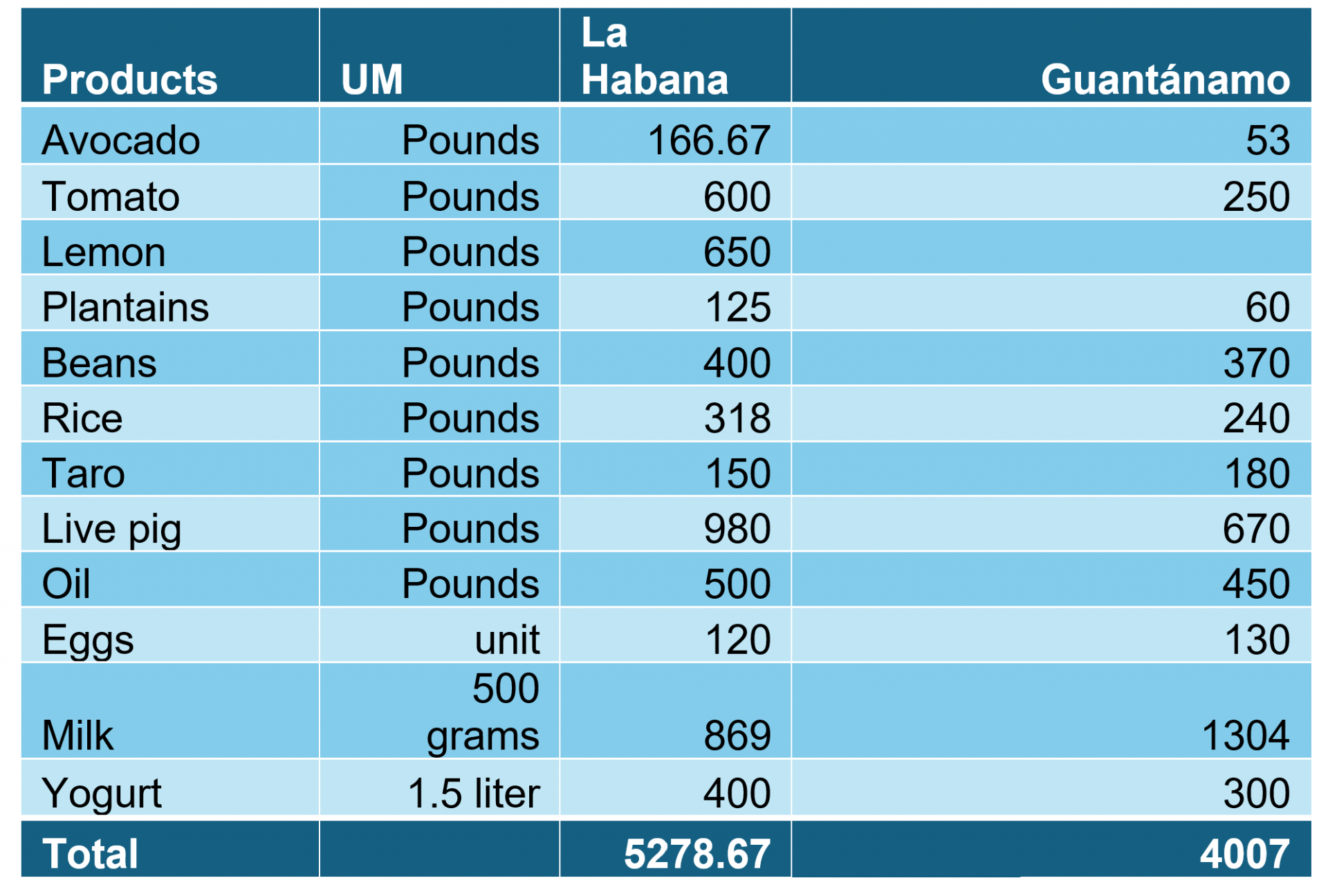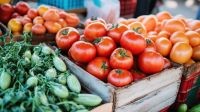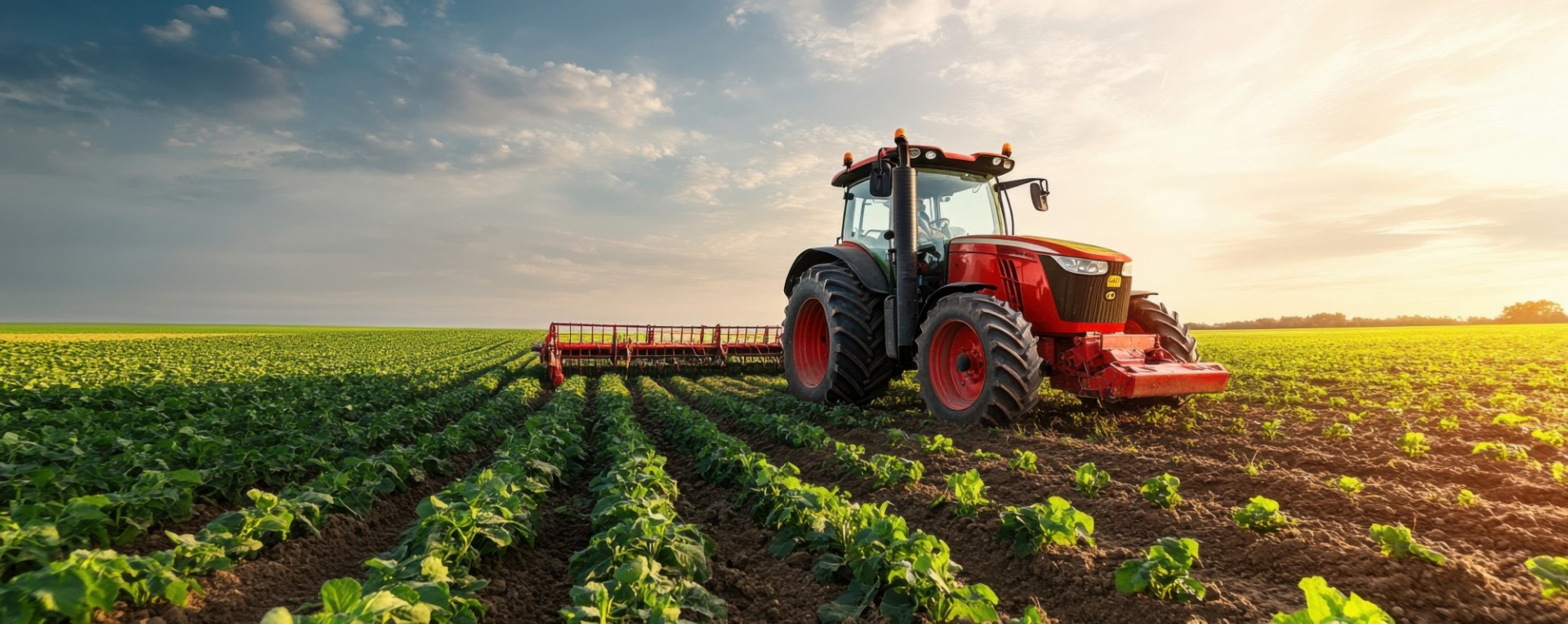How to Get Cuban Agriculture on Track
Omar Everleny Pérez Villanueva
The agricultural sector remains a critical function for the Cuban economy and the country's food security.
If there is one sector where it is necessary to get the Cuban economy on track quickly, it is agriculture, primarily because of its strategic importance for feeding the population. Over the past two years, its performance could be described as disastrous.
Although the government data for 2024 have not yet been released, we know that by mid-year, most agricultural production targets were not met due, among other things, to a lack of fertilizers, pesticides, fungicides, fuel, and animal feed. Moreover, the agricultural situation in 2023 was also dreadful, resulting in decreased food production. The most notable shortfalls were in the production of essential items such as eggs, meat, and milk.
If agriculture does not manage to increase production, at least of the products essential to the Cuban family diet, it will be very difficult for the country to achieve positive results in the so-called macroeconomic stabilization—a term coined by the government and currently in popular use but whose concrete meaning remains unclear.
One of the central questions we will ask ourselves is: What is the purpose of the Cuban National Assembly reporting economic data without adopting plans for improvement, particularly as the public does not see any improvements in their daily lives?
What we need to know, among other things, is what concrete measures have been taken to reverse this continuing drop in food production, what obstacles have been removed for producers, and whether ACOPIO (the state agency for purchasing and distributing agricultural products in Cuba) will pay outstanding amounts due to agricultural producers.
It is also important to know when, as promised in general announcements, producers will begin to receive part of their payments from the government in foreign currency. That foreign currency is necessary for producers to purchase and import the inputs needed for their crops. This is particularly true in the case of rice.
Table 1 below shows the decline in major agricultural production, especially in products that are important to the Cuban diet. How is it that pork and rice production almost disappeared in 2023? Production figures for 2024 are not yet available.
The same table shows the contraction in the availability of food products for direct consumption by the population and for use in industry.
Table 1: Selected agricultural productions. Years 2019-2023

Why These Results?
There is not a single factor causing this problem. It should be noted that Cuban agriculture has long failed to reduce the state's high outflows of foreign currency because the government has had to import basic food products for the national diet. Additionally:
- Cuba has an unfavorable macroeconomic environment, with GDP declines over the past two years, high structural distortions, and a lack of foreign currency to import essential production inputs such as fertilizers, feed, and seeds, among others.
- Decision-making continues to be highly centralized, and an impenetrable bureaucracy thwarts farmers from increasing their production.
- Internal investment in recent years has not been directed to agriculture, as the sector has received less than 3% of total government investments.
In short, Cuban agriculture faces significant challenges, with obstacles that are structural, economic, and climatic.
The country's heavy dependence on imports for food distribution is striking. As can be seen in Table 1 above, local production does not meet internal demand. It is estimated that Cuba imports around 70% of the food it consumes, representing a significant financial burden, particularly when the country’s exports are at their lowest level ever. Basic products such as rice, beans, chicken, oil, and powdered milk are almost entirely imported.
It is no secret that Cuban agriculture has the lowest productivity in the region, with some exceptions such as potato production. The causes are many: the lack of inputs—fertilizers, pesticides, machinery—along with fuel shortages, outdated infrastructure, and low wages. It is also no surprise that the centralized state management model under which it operates continues to impose limitations on efficiency and flexibility.
Although some recent modest reforms have been implemented to allow greater participation in the economy by the private and cooperative sectors, the results have been insufficient to meet the pressing needs. In recent years, the government has implemented measures to decentralize agriculture and allow producers greater autonomy. For example, direct sales of agricultural products in local markets have been allowed, and land has been granted to individuals in usufruct (long term permits) for farming. However, these reforms have advanced slowly and have not significantly transformed the agricultural sector. Moreover, the U.S. economic embargo has limited access to agricultural inputs, machinery, and international financing.
The critical state of agriculture results in food shortages and high prices in the markets, generating social discontent. The government had maintained a rationing system for basic products, but it no longer covers all the population's needs. Since mid-2024, the quantities distributed have decreased, and some products, especially meat, have been absent for months.
Table 2 shows a selection of prices for 12 agricultural products in two Cuban provinces. A quick look suggests that prices have no relation to the wages earned by salaried workers.
Table 2: Prices of Selected Products in Two Provinces (December 2024)

ONEI. Minimum and Maximum Prices of Selected Varieties by Territories. December 2024. January 2025 edition.
In reviewing the table above, note that 48% of retirees earn 1,528 pesos or less per month, and the average salary of workers is around 5,750 pesos. It has been estimated that due to inflation in recent years, the cost of the basic basket of goods and services for a three-person household far exceeds the wages received by that household.
The Challenges
In order to improve productivity and sustainability, Cuban agriculture faces complex challenges that require deep reforms, and significant investments – not the modest reforms adopted to date. The reality is that agricultural improvements remain limited. The agricultural sector continues to be a critical factor for the economy and food security.
One of the difficulties of the Cuban national economy is the existence of multiple national and foreign currencies, both physical and digital, while wages are paid in Cuban pesos. This makes food prices in the free market prohibitive for many people, due to the low Cuban wages and peso exchange rates.
All these problems combine to create a situation that affects the population's food security and nutrition. To increase food production in Cuba, the government could consider implementing a series of measures to address structural challenges and promote efficiency and innovation in the agricultural sector.

Among these measures, it is essential to undertake a new land reform that facilitates access to arable land for small farmers and cooperatives, with longer-term tenancy contracts to encourage private investment and land care. At the same time, bureaucratic procedures for granting and using idle land should be simplified.
ACOPIO needs to offer fairer, higher, and more stable prices to producers to encourage production, while relevant taxing agencies should reduce tax rates to producers in proportion to increases in production, and the government should provide direct subsidies for key inputs such as seeds, fertilizers, and machinery.
It goes without saying that Cuban agriculture has been decapitalized. Increased capital investment is needed to improve irrigation, storage, and transportation infrastructure, reduce post-harvest losses, and ensure that products reach markets in good condition.
Implementing these measures will require a comprehensive and coordinated approach, as well as sustained political commitment to overcome structural challenges and ensure Cuba's food security.

